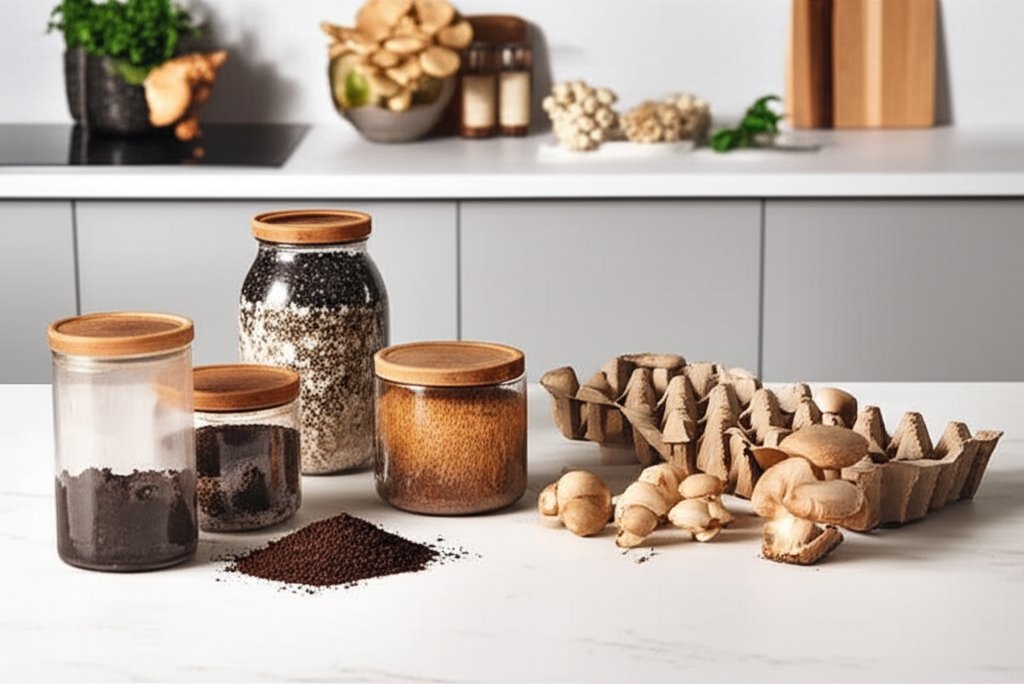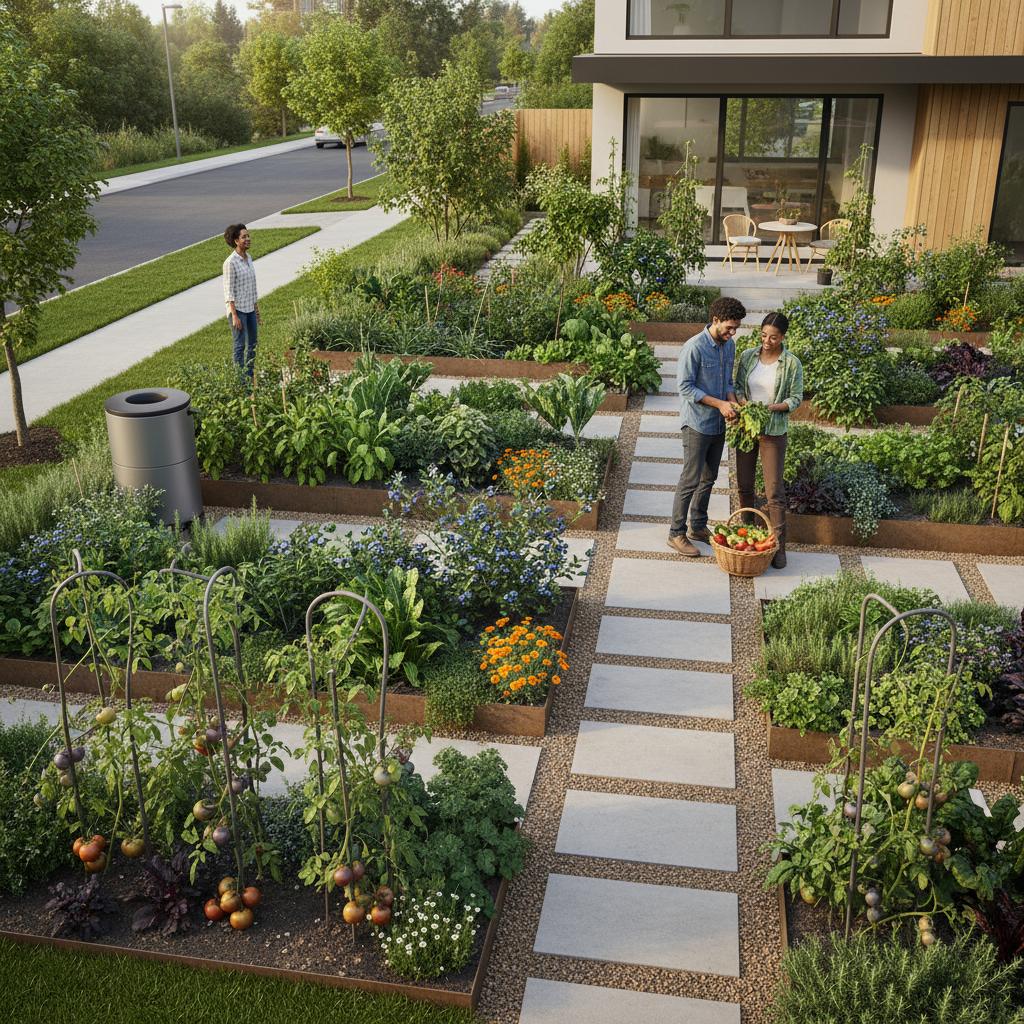Grow Edible Mushrooms at Home with Everyday Materials
Have you ever considered turning your kitchen scraps or unused yard materials into a source of fresh, homegrown food? Growing edible mushrooms at home unlocks a hidden layer of abundance, transforming waste into nourishment with minimal effort. You do not need specialized tools or vast spaces, just simple substrates like straw, cardboard, or coffee grounds, and a bit of patience to cultivate a thriving crop right where you live.
Decoding the Basics of Mushroom Growth
Unlike traditional crops, mushrooms do not sprout from seeds. Instead, they emerge from spores that form a web-like structure called mycelium, which acts as the root system. This mycelium feeds on a substrate, a nutrient-rich material that serves as the foundation for growth. By using everyday items as substrates, you can create an ideal environment for mushrooms to flourish without complex setups.
Common household materials work wonderfully as substrates. Straw from bales, cardboard from packaging, wood chips from yard work, and even spent coffee grounds from your morning brew can sustain a healthy mushroom crop. Once the mycelium colonizes the substrate, it produces fruiting bodies, the mushrooms you harvest and enjoy.
Selecting the Best Mushroom Variety for Your Setup
Each mushroom species has unique preferences for substrates, so matching your resources to the right type simplifies the process. Here are three beginner-friendly options to consider:
- Oyster mushrooms adapt well to straw, cardboard, or coffee grounds, offering quick growth and forgiving conditions for novices.
- Shiitake mushrooms thrive on hardwood logs or chips, delivering robust, savory flavors after a longer cultivation period.
- Wine cap mushrooms excel in outdoor garden beds with wood chips, blending seamlessly into edible landscaping projects.
Start with a single variety to master the basics. As your skills grow, experiment with other species to diversify your harvests.
Preparing Substrates for Optimal Growth
A properly prepared substrate is essential to prevent contamination from bacteria or mold, giving your mushrooms a competitive edge. Cleanliness and moisture balance are critical to success. Try these straightforward preparation techniques:
- Pasteurize straw by soaking chopped pieces in hot water at 160 degrees Fahrenheit for one hour, then drain and cool before use.
- Soften cardboard by submerging sheets in hot water until pliable, then layer them with spawn in a breathable container.
- Mix coffee grounds with a small amount of straw or cardboard to avoid clumping, using fresh grounds collected from your kitchen.
Aim for a substrate that feels damp but not waterlogged. Mushrooms require both moisture and airflow, so striking the right balance ensures healthy mycelium development.
Inoculating Substrates with Mushroom Spawn
Mushroom spawn, the active mycelium ready to colonize, is your starting point. Think of it as the equivalent of a plant seedling, poised to spread through the substrate. To inoculate effectively, break the spawn into small pieces and mix it evenly into your prepared material, ensuring contact across all areas.
Place the inoculated substrate in perforated bags, buckets with small holes, or directly into shaded garden beds. Store these containers in a cool, shaded area, maintaining consistent moisture. Within two to four weeks, white, thread-like mycelium should appear, signaling successful colonization.
Maintaining Ideal Growing Conditions
Mushrooms thrive in environments mimicking a damp forest floor, with high humidity, moderate shade, and gentle airflow. Replicate these conditions at home by focusing on three key factors:
- Humidity control: Mist the substrate daily with a spray bottle to keep it moist without pooling water.
- Air circulation: Ensure a light breeze or subtle ventilation to supply oxygen, avoiding strong drafts that dry out the material.
- Shade protection: Position your setup away from direct sunlight, as intense light can hinder growth and dehydrate the substrate.
Small tweaks to these elements can significantly boost your yield. Monitor the substrate closely during the first flush to fine-tune your approach.
Harvesting Your Homegrown Mushrooms
When mushroom caps start to open and flatten, they are ready for harvest. Gently twist them at the base or use a clean knife to cut them, preserving the substrate for future flushes. Timing is crucial, as picking at the right stage ensures peak flavor and texture.
Many substrates support multiple harvests. After the initial flush, maintain moisture and conditions, and you may see additional rounds of growth until the nutrients are depleted.
Repurposing Spent Substrates for Garden Health
Even after mushrooms stop fruiting, the spent substrate retains value. Spread it across garden beds or add it to your compost pile to enhance soil structure. The remaining mycelium breaks down organic matter, boosting fertility and supporting long-term garden health. This cycle turns waste into a resource, benefiting both your table and your land.
Building a Sustainable Mushroom Routine
Incorporating mushroom cultivation into your daily life transforms how you view household waste. Coffee grounds from breakfast, cardboard from packages, and trimmings from yard work all gain new purpose as substrates. Over time, this practice weaves seamlessly into your routine, much like tending to herbs or vegetables.
Start small by selecting one variety and preparing a modest batch of substrate. Focus on learning the balance of moisture and air while observing how the mycelium spreads. With each harvest, you gain confidence, and soon, your kitchen corner or garden bed becomes a vibrant source of fresh food, deepening your connection to sustainable living.



